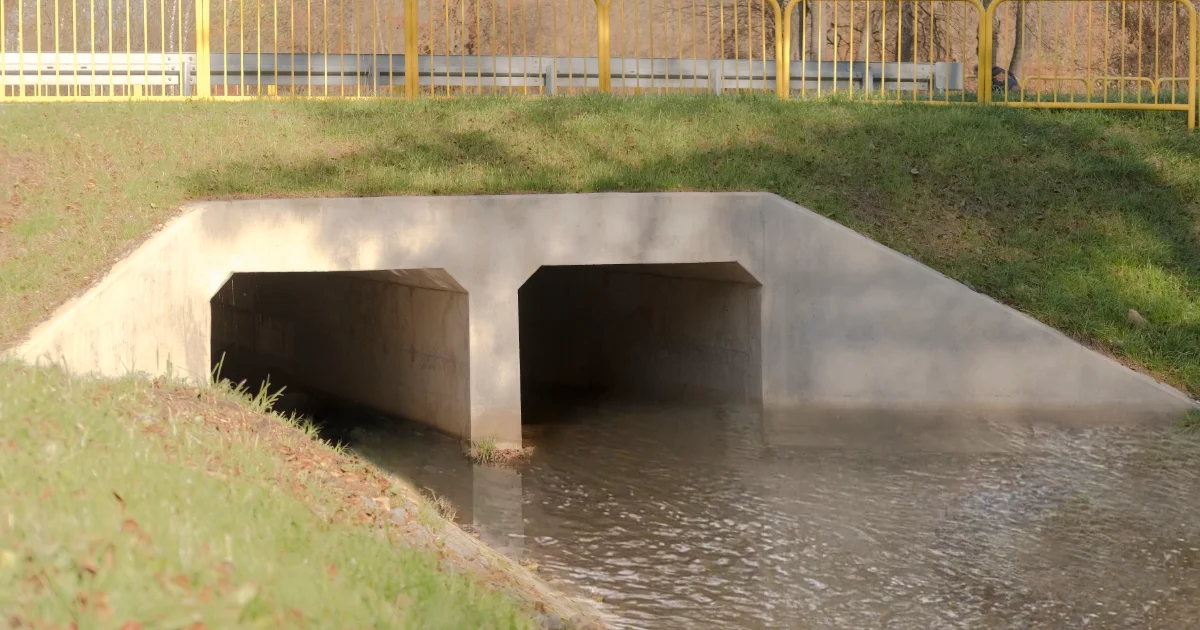Channel Crossing structures
- It is used to carry irrigation channel across roads, hill sides and natural depressions or drainage ways.
- Siphons are used to carry irrigation channels across natural farm obstructions.
a. Flumes:
- Flumes are used to carry irrigation water across streams, canals, gullies, ravines or other natural depressions.
- The open channel when used are semi-circular metal pipes or rectangular or trapezoidal wooden channels.
- When pipes are used for flumes, they should be placed below the water surface on the upstream end to ensure that they flow full.

b. Culverts:
- The structure consists of masonary head walls at the inlet and outlet ends connected together by a burled pipeline.
- Earth covering over the pipe should not be less than 30 cm and not greater than 45 cm.
- At the outlet, a stilling basin is required to prevent erosion downstream.
- Low cost culverts may be constructed for ditch crossing.

c. Inverted siphons:
- Economical when a channel has to cross a wide depression or where the road surface lies close to the field.
- Consists of an inlet and an outlet tank connected together at their bottom by a pipe.
- Check gate provided at the inlet end to control the water surface level in the upstream channel.
- To collect the still, the bottom of tank is kept about 15 cm below the bottom of the pipe.
- The size commonly used is 60 cm x 60 cm.
- The pipes of an inverted siphon must be protected against traffic damage by an earth cover of 30 cm or more.
